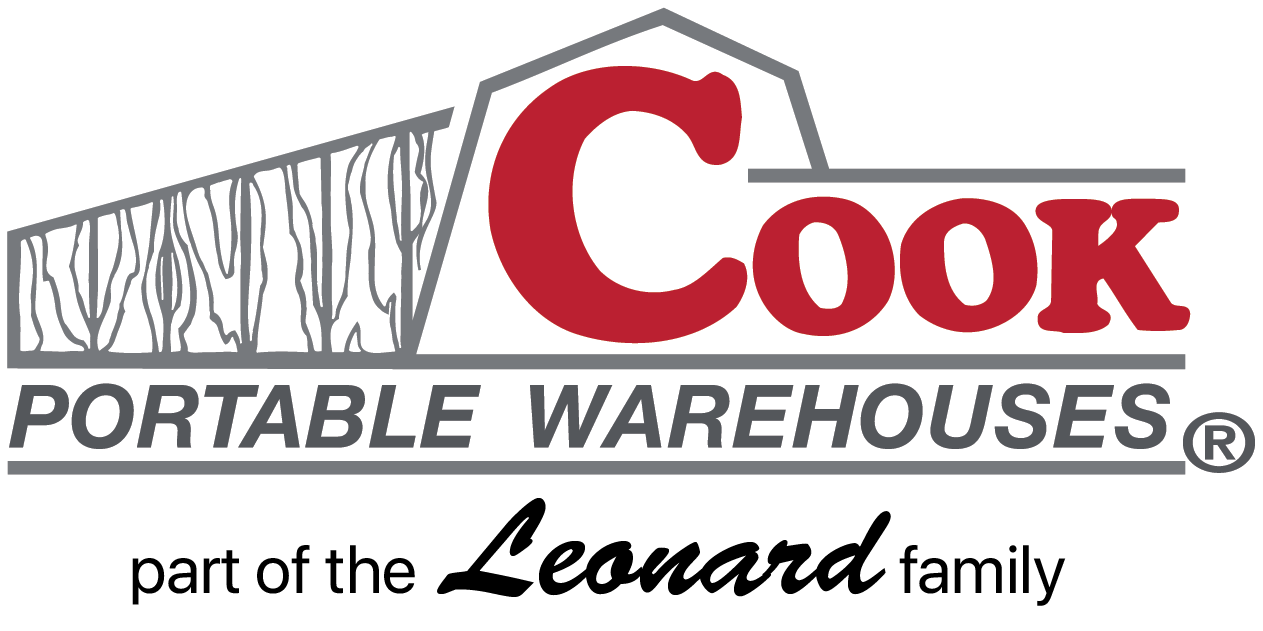The History of Cook Portable Buildings

The Beginning: Cook Sales, Inc.
Cook Sales, Inc. was founded in 1984, as a family owned business. Founder John Cook passed away in 2005 but the company remains a family-owned business to this day.
For the first five years, the main focus of Cook Sales was related to the railroad industry. During that time, railroad companies were downsizing their inactive rail lines, abandoning tracks and selling off materials such as the rail, rock and crossties.
Cook Sales, Inc. acted as a broker between the rail companies and wholesale suppliers, selling mostly crossties to companies like big box building supply centers and landscape contractors. The crossties were used in the construction of retaining walls and landscape projects mostly in the southeastern part of the country.
In the late 1980’s, a deal was completed with a large lumber pressure treating company in southeastern Alabama to purchase 50,000 crossties. A trade was made for pressure treated lumber with the plan to sell the lumber at the company’s main office near Carbondale, Illinois.
But, the sale of pressure treated lumber proved to be difficult. With a large inventory of material on hand, John Cook decided to hire a carpenter to build something that utilized the stockpiled material. That something turned out to be a portable building.
The Evolution of Cook Portable Warehouses
The original Cook Portable Warehouses were made of entirely pressure treated materials, making Cook the first company to build portable buildings completely from pressure treated lumber. This quality continues today as every building purchase comes with a lifetime warranty against decay and termite damage.
But now John Cook was faced with another problem, how these buildings be delivered? With limited capital, he purchased a 1967 pickup truck and contracted a local weld shop to build the trailer. An old tilt deck type boat trailer was used as the under chassis, and a flat deck floor was framed and decked with plywood.
Using the trailer’s hand crank, the buildings were winched up on the tilt deck with one person cranking while another person would use a pry bar to help move the building forward.
 This primitive design would later be the inspiration for the trailers Cook uses today. They are also tilt deck, but utilize electric winches and hydraulics to allow one person to easily load and unload buildings up to 32-feet.
This primitive design would later be the inspiration for the trailers Cook uses today. They are also tilt deck, but utilize electric winches and hydraulics to allow one person to easily load and unload buildings up to 32-feet.
At the time, John Cook was leasing space off-site storage space, but suddenly realized he could use the portable buildings for storage. This decision saved the company a large monthly lease payment.
This decision prompted the idea of leasing storage with portable sheds. The building would be where the customer needed it with their monthly payments going toward the value of the building. This was the beginning of our in-house financed Rent to Own program.
Once again, Cook set the standard for products and services in the portable shed industry.
The Growth of Cook in the Portable Storage Market
With the decrease in the number of crossties available and the dramatic growth in the sale of portable buildings, Cook Portable Warehouses became the company’s sole focus.
Dealers across the country were set up on a consignment arrangement where Cook builds, finances and delivers the product. We now have more than 300 dealers in 16 states and communities across the country.
Cook opened a larger manufacturing facility in southern Illinois in 1987 and has opened plants in Valdosta, Georgia, Bastrop, Texas and Purvis, Mississippi with plans to open more in the near future.
So, what began as an idea to get rid of excess materials, became a multimillion dollar corporation, with over a quarter of a million units sold in 13 states.
Celebrating 30 Years in Business
 In 2014, Cook celebrated our 30-year anniversary. Over the past 30 years, we have learned a lot and developed a set of core values that guide our business. As we move forward, we plan to remain true to those values and incorporate them into our future vision.
In 2014, Cook celebrated our 30-year anniversary. Over the past 30 years, we have learned a lot and developed a set of core values that guide our business. As we move forward, we plan to remain true to those values and incorporate them into our future vision.
To continue to thrive as a business, we must look ahead, understand the trends and continue to innovate. We plan to set new goals, keep these objectives clearly in focus and strive to reach them every day.
We are proud to be an American company that employs hard-working Americans. We also appreciate each and every one of our customers and realize the burden we have to do what is right for our friends, neighbors, and communities.
Thank you for your interest in Cook Portable Warehouses. We hope to make you a part of our family very soon.
Learn more about the Cook Mission and Vision and Our Promise to each and every one of our customers.
